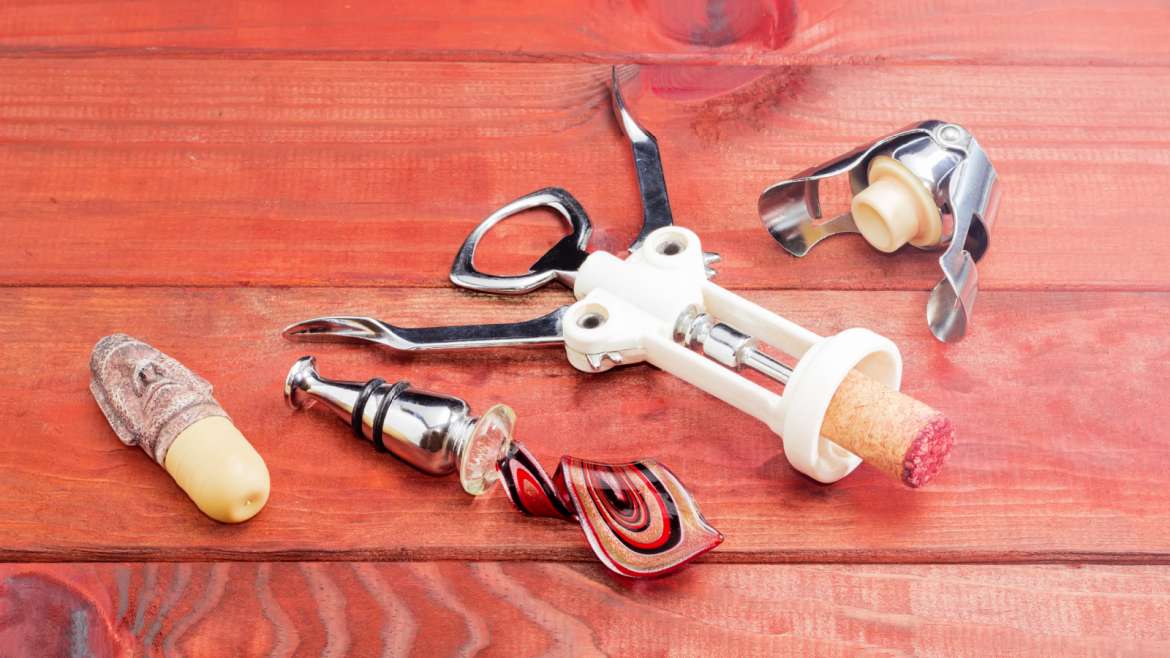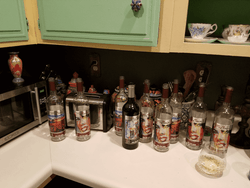To keep the wine fresh and flavorful, sealing the wine bottle properly is vital! This helps prevent oxidation and spoilage while preserving the wine’s unique flavor.
Cork is the most commonly used type of wine bottle closure for many valid reasons. In this article, however, we will explore other types of wine bottle tops and the reasons behind their use.
Different wine bottle closures
Several types of wine bottle closures are in use, including screw caps, synthetic corks, metal crowns, and glass stoppers. While each option has its benefits, many winemakers continue to use cork for their bottles due to its long history and reputation for high-quality sealing.
Screw caps
This type of closure is an aluminum cap that features a screw-on design. It was developed in the 1950s and usually has a small plastic liner on the inside. Unlike traditional cork closures, screw caps are much easier to use and more effective at sealing in the wine’s flavor and aroma. However, some argue that these caps can affect the wine’s taste, as they are often lined with substances that prevent cork taint. Screw caps account for 90% of wine bottle closures in New Zealand!
Synthetic corks
Synthetic corks are made from plastic or other synthetic materials and are often used as a cork substitute in wine bottles that must be sealed airtight. These closures are typically made to mimic the look and feel of traditional cork, making them a popular choice for winemakers looking for an alternative.
Metal crowns
Metal crowns are also known as champagne corks, muselets, wirehoods, or champagne wires. These metal caps use metal wire to attach to the top of a mushroom-shaped cork closure. These closures are typically made from aluminum or steel and provide a tight seal that keeps oxygen out and prevents spoilage. These muzzle-like closures are often covered in a decorative foil.
Glass stoppers
Glass stoppers are another popular type of wine bottle closure. These stoppers are typically made from glass or plastic and can also be customized according to the winemaker’s needs. They are praised for being reusable and environmentally friendly while providing a tight seal. Glass stoppers are ideal for wines that don’t require long-term aging. Glass stoppers also provide a beautiful look to any wine bottle and they come in countless designs, colors, and forms.
Why do wine bottles use natural cork?
There are many reasons why cork is the most commonly used wine bottle closure. For one, it has a long history of use and a reputation for high-quality sealing. In fact, cork has been used to seal wine since the 1400s. Additionally, cork is an effective seal that prevents oxygen from getting into the wine, thus protecting it from oxidation and spoilage.
Cork is also relatively easy to produce and comes in a wide variety of sizes and shapes to suit the needs of winemakers. In addition, cork is a natural, biodegradable and sustainable product. This makes it a popular choice for those looking to minimize their environmental impact. Cork still accounts for 70 percent of all wine bottle tops. The only downside to natural cork closures is the possibility of trichloroanisole, aka “cork taint.”
Whether you’re a wine lover or just a casual drinker, there’s no denying the appeal of wine bottle closures. From traditional cork to modern screw caps, many different types of closures are available that ensure the wine’s freshness and flavor. While each type has its benefits and drawbacks, cork is clearly the most popular choice for this critical task. So if you’re looking for a wine bottle closure that provides an airtight seal and preserves the wine’s taste and aroma, look no further than cork.






